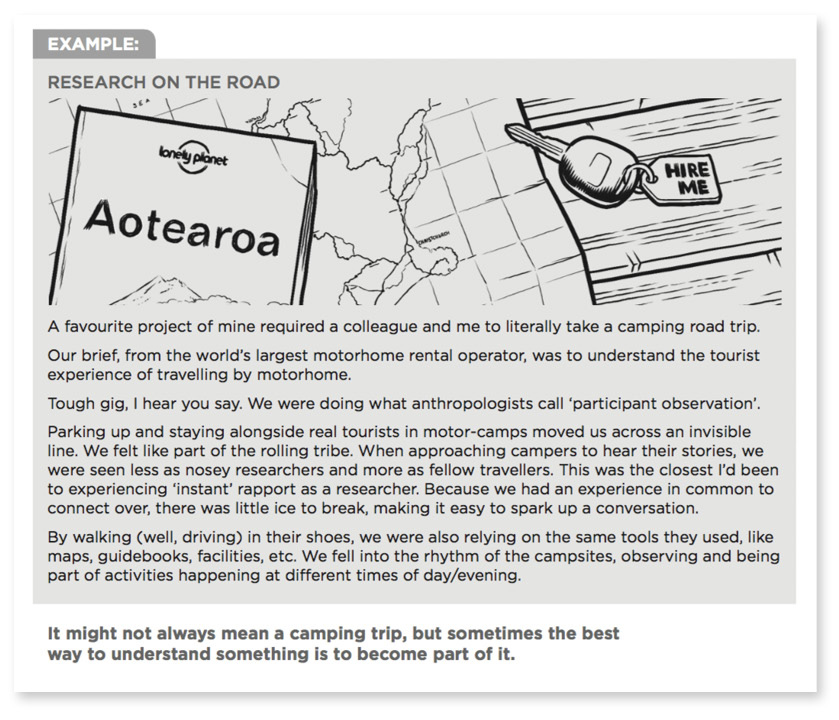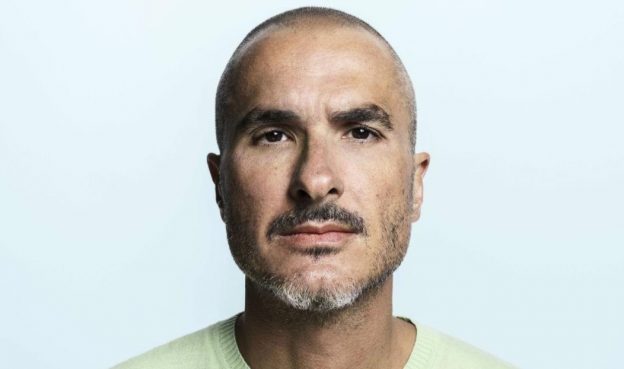One of the biggest points of value in conducting qualitative research – putting yourself in your customers’ context – has been wiped off the table, right when it’s most needed.
In a time where it’s never been more important to bring an understanding of people’s mindset, behaviour and expectation to bear on product development, while business and public organisations are rethinking service delivery for their market, I’m concerned.
I’m concerned those offering research as part of their service may default to the possible at the expense of the valuable.
Context matters.
Those who’ve read my book will know how important I believe context, and ‘being there’ contributes to the quality and reliability of the work we do.
A couple of chapters in, I say this:

And among many others, I give this example:

… but right now, when researchers most need connection with people in their world, physically being there is a challenge.
Remote to the rescue?
Business continuity is important, and if there was ever a time for remote research, it’s now. Like many researchers working over the past few weeks, I recently had a project switch from in-person to remote – a dozen interviews via video – with valuable outcomes. I could see the tradeoffs, they were manageable, and I made sure the client understood these.
But I’ve started to see researchers and agencies announcing ‘we’re still open for business’ promoting remote-only research approaches, focusing on the benefits, but glazing over any of the tradeoffs.
Remote approaches have always been part of the research toolbox, though usually as a complement to in-person work or to add; reach, scale, frequency, specific types of participants or to include communities/individuals for whom this kind of connection works best.
However, just as speed and democratisation have influenced the shape of research opportunities – favouring a rapid over rich variety of empathy – I’m picking clients may get a taste for the convenience and economy of remote research without always realising what they’re sacrificing in terms of data quality and depth of experience which comes from being with the customer in the moment.
Yes, remote approaches will be a blessing to our collective practice for some time and it’s exciting to think of the creative approaches which will emerge from these constraints, but short-term reliance on research methods without explaining the tradeoffs may risk training our clients to accept what appears to be a more convenient option. As design-at-pace sometimes seems more user-scented than centered, we might see empathy be replaced by Zoompathy (I really hope this term doesn’t catch on).
So, now what?
I believe current constraints bring an opportunity to highlight the value of contextual fieldwork. But as we’re adopting and applying remote approaches where we otherwise might not have, perhaps we should:
- Reflect on and amplify your experiences from the field. As anecdotes with colleagues, or in conversation with clients to maintain the status and value of face-to-face and contextual work. Steve Portigal’s growing collection of ‘War Stories’ offer plenty of fodder, but I’m picking you have your own.
- Feel the edges of what works well, and what doesn’t. For different research questions, circumstances, communities and contexts,
- Recognise the gap between being there and not. What’s missing, and what other ways might we fill it,
- Acknowledge the limits as well as the benefits. Beyond the convenience of reduced budget and practicalities – into matters of access and inclusion, privacy, confidentiality, safety and scale.
- Highlight inefficiencies or insensitivities we may have normalised though extensive international travel. Limiting unnecessary travel is a good thing for all our futures.
- Discuss and document what you’ve learned. With your team and your client.
- Share with the research community. For example, Ex colleague Sarah Rink in Barcelona has shared a guide to remote research, written from a UX research perspective, talking through the challenges of capturing non-verbals and the inherent tech distractions.
Together, by remaining adaptable but sharing our learnings we can help remote become a more valuable part of the toolbox, while ensuring the undeniable value of in-person work continues to be used to best effect when this is once again possible, and for the situations it’s most appropriate.
Please add your experiences or any links to articles in the comments, we all stand to gain, especially our clients.
Remotely yours,















